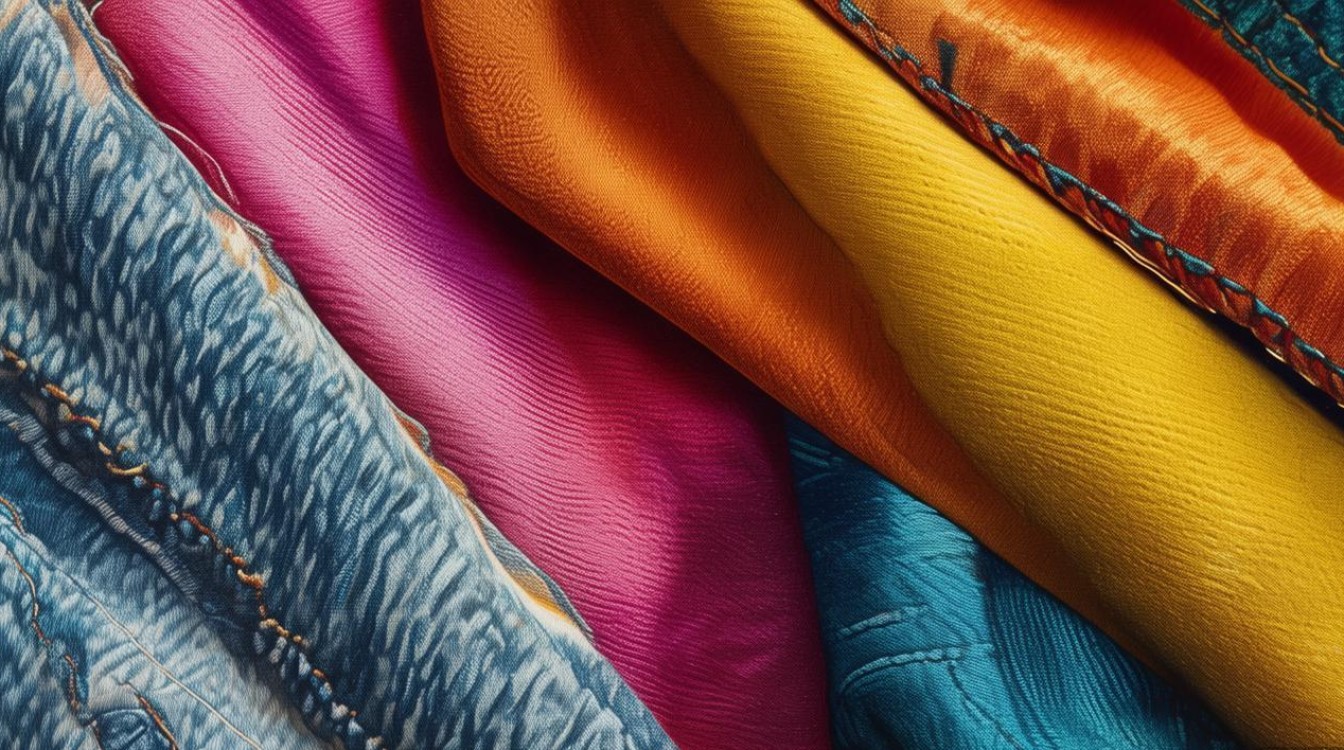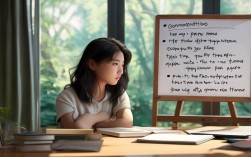在雅思口语考试中,clothes和colors是两个高频且关联性极强的主题,无论是日常话题“描述一件你喜欢的衣服”,还是抽象议题“讨论服装与身份认同”,都离不开对服饰款式、色彩搭配及文化内涵的阐述,本文将从基础词汇延伸到深层表达,结合实用场景与应试技巧,帮助考生系统掌握相关内容,在口语考试中展现流利度与思维深度。

核心词汇与表达:从“穿什么”到“怎么搭”
服装类型:精准描述“款式”与“场合”
谈论服装时,需根据场景选择具体词汇,日常休闲、正式场合、运动服饰等类别需区分清楚,避免笼统使用“clothes”。
| 类别 | 常见词汇 | 场景例句 |
|---|---|---|
| 日常休闲 | T-shirt, jeans, hoodie, sneakers, sweatpants, jacket | “I usually wear a white T-shirt and blue jeans on weekends—it’s comfortable and casual.” |
| 正式场合 | suit, dress, gown, blazer, tie, heels, leather shoes | “For my cousin’s wedding, I chose a navy blue dress with a pair of black heels.” |
| 运动服饰 | sportswear, tracksuit, running shoes, yoga pants, jersey | “I wear breathable sportswear and running shoes when I go jogging in the morning.” |
| 传统/特色服饰 | cheongsam (旗袍), hanbok (韩服), kimono (和服), sari (纱丽), tartan (格纹裙) | “The cheongsam is a traditional Chinese garment that often features delicate embroidery and bold colors.” |
颜色形容词:用色彩传递“情绪”与“风格”
颜色不仅是视觉特征,更能反映个性与心情,掌握颜色形容词的拓展表达(如深浅、色调)能让描述更生动。
- 基础颜色:red(热情/危险)、blue(平静/忧郁)、green(自然/生机)、black(正式/神秘)、white(纯洁/简约)、yellow(活泼/温暖)、pink(温柔/少女感)、purple(高贵/神秘)。
- 拓展表达:
- 深浅:light blue(浅蓝)、dark green(深绿)、pastel pink(粉彩色粉红)、vibrant yellow(鲜艳的黄色)。
- 联想:“I love wearing earthy tones like brown and olive green—they make me feel connected to nature.”
- 文化寓意:“In China, red is associated with good luck and celebration, so people wear it during the Spring Festival.”
语法与句型:从“简单句”到“复合逻辑”
雅思口语评分注重语法多样性与逻辑连贯性,谈论clothes和colors时,可灵活运用以下句型:
描述偏好:“I prefer... because...”
- “I prefer loose-fitting clothes to tight ones, as they allow me to move freely.”
- “Rather than following trends, I choose colors that suit my skin tone—like warm shades of orange and beige.”
原因解释:“The reason why... is that...”
- “The reason why I rarely wear black is that it makes me look too serious in daily life.”
- “The reason why bright colors are popular in summer is that they reflect sunlight and create a cheerful vibe.”
对比转折:“While...,...”
- “While some people think wearing all black is stylish, I believe it’s better to add a pop of color to stand out.”
- “Although expensive brands are often associated with high quality, I prefer affordable clothes that are both comfortable and durable.”
虚拟假设:“If I were to..., I would...”
- “If I were to design a uniform for students, I would choose soft colors like light blue and light green to reduce eye strain.”
- “If I were to wear red to an interview, I would pair it with neutral colors to avoid looking too aggressive.”
文化视角:服装与颜色的“象征意义”
在Part 3的深度讨论中,结合文化背景能展现批判性思维。
-
颜色与文化:
- 西方文化:白色象征纯洁(婚纱),黑色哀悼(葬礼);
- 东方文化:红色喜庆(婚礼),白色丧葬(葬礼);
- 全球趋势:环保色(绿色、棕色)因可持续发展理念流行。
-
服装与社会身份:
- “In some industries, like finance or law, formal attire such as suits and ties is expected to convey professionalism and authority.”
- “Streetwear, on the other hand, often reflects youth culture and rebellion against traditional dress codes.”
-
快时尚与环保:
“The rise of fast fashion has made clothes and colors more accessible, but it also leads to environmental issues like textile waste. Many young people now choose secondhand clothes or sustainable brands to reduce their carbon footprint.”
应试技巧:高频话题“模板”与“个性化”结合
Part 2:Describe an item of clothing you like
结构:是什么(what)+ 样式颜色(style/color)+ 穿着场景(when/where)+ 喜欢原因(why)。
范例:
“I’d like to talk about a linen shirt I bought last summer. It’s light beige with a loose fit and short sleeves, which is perfect for hot weather. I usually wear it when I go to the beach or meet friends for coffee. What I love most about it is not just its comfort—linen is breathable and doesn’t wrinkle easily—but also the color. Beige is a versatile neutral that matches almost any bottoms, like jeans or skirts. More importantly, it reminds me of my holiday in Greece, where I first saw how locals effortlessly combine simple clothes with natural colors. This shirt isn’t just clothing; it’s a memory and a statement of my preference for practical yet stylish things.”
Part 3:How do fashion trends influence people’s choices?
思路:趋势来源(社交媒体/明星)→ 双面影响(积极:个性表达;消极:盲目跟风)→ 个人态度(理性选择)。
范例:
“Fashion trends today are heavily influenced by social media platforms like Instagram and TikTok, where influencers and celebrities showcase the latest styles. This can have both positive and negative effects. On the positive side, trends allow people to experiment with their appearance—for example, the resurgence of 90s baggy jeans or pastel colors lets individuals express their creativity. However, many people feel pressured to follow trends even if they don’t suit their personal style, leading to impulsive purchases and wasted money. From my perspective, it’s important to strike a balance: being open to new trends but choosing clothes that are both comfortable and reflective of one’s personality, rather than blindly chasing what’s popular.”
FAQs
Q1: 雅思口语中描述衣服时,如何避免词汇重复?
A1: 可通过替换词(如“clothes”替换为“garment”“attire”“outfit”)、具体化描述(如“dress”细化为“maxi dress”“bodycon dress”)或添加修饰语(如“embroidered shirt”“tailored blazer”)来丰富表达,与其反复说“I like this shirt”,不如说“I’m particularly fond of this striped shirt—it’s made of cotton and has a classic collar design.”
Q2: 讨论颜色时,如何体现语言的地道性?
A2: 除了基础颜色词,可使用英语中与颜色相关的习语或搭配,如:“in the red”(负债)、“feel blue”(情绪低落)、“see red”(愤怒)、“a white lie”(善意的谎言)。“I feel blue when I see gray skies, so I always wear bright yellow to cheer myself up.” 结合文化联想(如“green with envy”嫉妒)能让表达更生动自然。











